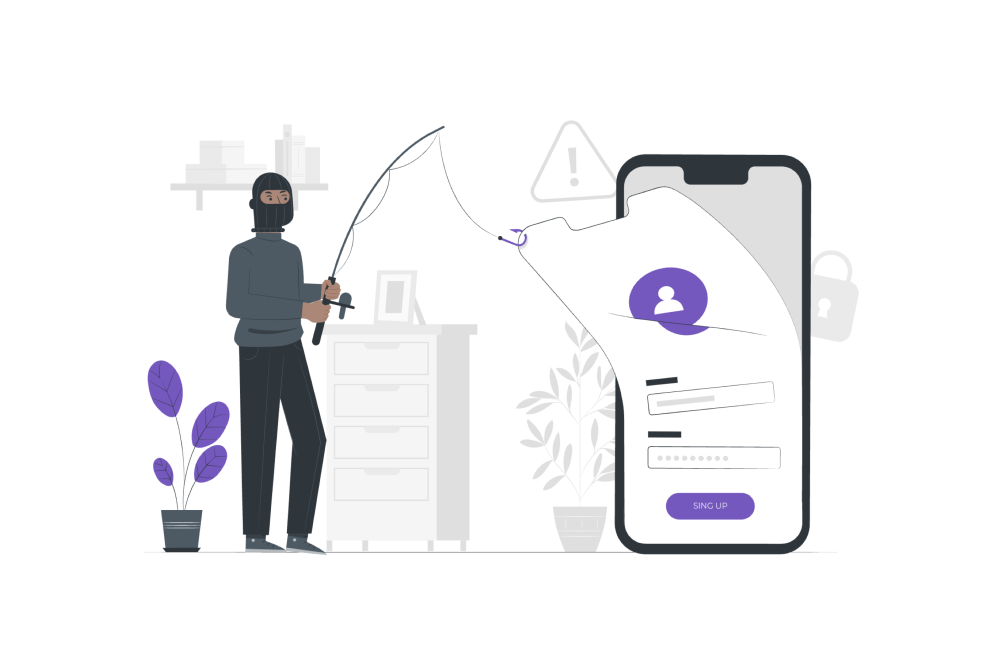Smishing: The rising threat of SMS phishing Written on

So, you might have heard of SMS phishing - or smishing. Smishing is a deceptive cyberattack that leverages text messages to trick individuals into sharing sensitive information or performing actions that compromise their security. It has become popular because it's simple, and we all use our phones like, all the time.
One common smishing tactic involves sending fraudulent text messages that appear to originate from legitimate sources, such as banks or online services. These messages often contain urgent or alarming content, designed to elicit a quick response. They make it sound like it's life or death, super urgent stuff. They typically request sensitive information like usernames, passwords, credit card details, or personal identification numbers (PINs) under the pretense of resolving an issue or confirming an account.
SMS phishing: Impacting customers and businesses
Smishing, or SMS phishing, significantly impacts both customers and businesses, leading to financial losses, compromised personal information, and emotional distress.
For Individuals:
-
Financial losses: Victims may suffer monetary losses due to unauthorized transactions.
-
Identity theft: Personal information obtained through smishing can be used for creating synthetic identities to commit ID fraud.
-
Emotional distress: Falling victim to smishing can result in feelings of violation, anxiety, and a loss of trust in digital communications and businesses.
For Businesses:
-
Regulatory penalties: Failure to protect customers from smishing attacks can lead to fines and legal repercussions.
-
Reputational Damage: Incidents of smishing can erode customer trust, resulting in lost business and a tarnished brand image.
Given these substantial risks, it's imperative for both individuals and organizations to adopt proactive measures against smishing. Implementing advanced security protocols, educating stakeholders, and fostering a culture of vigilance are essential steps in mitigating the threats posed by smishing attacks.
The limitations of SMS-based authentication
Traditional SMS-based authentication methods, such as one-time passcodes (OTPs), have been widely used for securing online accounts. However, they present several significant limitations that can compromise security:
1. Susceptibility to interception and eavesdropping
SMS messages are transmitted in unencrypted form, making them vulnerable to interception by malicious actors. Attackers can exploit vulnerabilities in the Signaling System protocol to intercept messages and gain unauthorized access to sensitive information.
2. Vulnerability to SIM swapping attacks
In a SIM swapping attack, an attacker deceives a mobile carrier into transferring a victim's phone number to a SIM card under the attacker's control. This allows the attacker to receive all SMS communications, including OTPs, effectively bypassing SMS-based authentication.
3. Exposure to social engineering
As said before, cybercriminals can use social engineering tactics to trick individuals into revealing OTPs sent via SMS. For example, an attacker might send a phishing message that directs the victim to a fraudulent website designed to capture authentication codes.
4. Dependence on mobile network reliability
SMS delivery is contingent on the reliability of mobile networks. Network outages, congestion, or delays can result in OTPs not being delivered promptly, hindering timely authentication and potentially locking users out of their accounts. I
5. High operational costs
Implementing SMS-based authentication incurs costs per message sent, which can accumulate significantly for organizations with large user bases. Additionally, managing and supporting SMS authentication systems adds to operational expenses.
6. Poor user experience
Users may experience frustration due to delays in receiving OTPs, especially in areas with poor network coverage.Additionally, the need to switch between devices or applications to retrieve and enter codes can be cumbersome, leading to a less seamless authentication process.
Given these limitations, it is advisable for organizations to consider more secure and user-friendly authentication methods, such as app-based authenticators or biometric verification, to enhance security and improve the user experience.
Why decentralized face authentication rocks
The primary weakness of SMS-based authentication methods, like one-time passcodes (OTP) sent via text messages, is their vulnerability to interception and social engineering tactics like SMS phishing.
Here are a few reasons why face authentication is the superhero of secure logins:
✅ Biometric authentication: Face authentication utilizes biometric data unique to each individual, such as facial features, which are difficult to replicate or steal. This makes it significantly more secure than static codes sent through SMS.
✅ Protection against phishing: Since face authentication relies on facial recognition technology, it is less susceptible to phishing attacks compared to SMS codes. Phishers cannot trick users into revealing their facial features through deceptive messages.
✅ Reduced dependency on text messages: Face authentication reduces reliance on SMS messages, which can be intercepted by attackers through SIM swapping or malware. This reduces the attack surface and mitigates the risk associated with SMS-based authentication.
✅ Decentralized database: Unlike traditional centralized systems, which often store sensitive biometric data on a single server, decentralized solutions distribute this data across a network of devices or nodes. This means biometric data is not stored in one vulnerable location, reducing the risk of a single point of failure or a massive data breach.
✅ Enhanced user experience: Face authentication provides a seamless and convenient user experience, as users only need to show their face to access their accounts or perform secure actions. This ease of use encourages individuals to adopt more secure authentication practices.
Strengthen your business defenses against smishing attacks
The surge in smishing incidents underscores the necessity for both individuals and businesses to adopt advanced security measures. Traditional SMS-based authentication methods are increasingly vulnerable, highlighting the need for more robust solutions. Decentralized face authentication offers a secure and user-friendly alternative, leveraging biometric data to enhance protection against unauthorized access. By integrating such innovative technologies, organizations can significantly reduce the risk of smishing attacks and bolster overall cybersecurity.
Don't wait for a security breach to reveal vulnerabilities in your authentication processes. Explore how decentralized face authentication can fortify your organization's defenses against smishing and other cyber threats.
Schedule a free consultation with our security experts to assess your current systems and discover tailored solutions that meet your needs.






